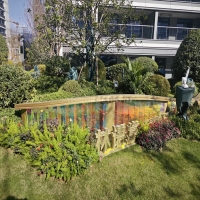Welcome to the website for landscape facilities products and knowledge.
How does the product’s design prevent mold or mildew growth in damp climates?
In regions where humidity reigns supreme, ordinary products quickly fall victim to mold and mildew—but intelligently engineered designs fight back through multiple sophisticated mechanisms. The first line of defense begins with material science; advanced polymers and natural fibers are specifically selected for their hydrophobic properties and moisture-wicking capabilities, creating surfaces where water droplets cannot linger long enough to support microbial life. These materials are often infused with microscopic silver ions or zinc particles that continuously disrupt mold cellular functions without chemicals leaching into the environment.
Beyond material composition, physical design plays an equally crucial role. Strategic ventilation channels are integrated directly into the product architecture, creating constant air circulation that evaporates accumulated moisture before it becomes problematic. This passive airflow system works in tandem with raised platform designs that prevent total surface contact, eliminating the dark, stagnant pockets where mold traditionally thrives.
Many modern products incorporate humidity-responsive technologies; some feature desiccant chambers filled with silica gel that actively absorb atmospheric moisture, while others use phase-change materials that absorb excess humidity during damp conditions and release it during drier periods. The most advanced designs even include UV-free photocatalytic coatings that use ambient light to break down organic contaminants mold would otherwise feed upon.
These multi-layered protection strategies—combining hostile surfaces to microbial life, intelligent airflow management, and active moisture control—create products that maintain their integrity and hygiene even when relative humidity consistently exceeds 85%. The result is durable protection that doesn't require constant maintenance or chemical treatments, making them ideal for bathrooms, coastal homes, tropical climates, and other challenging environments where moisture has traditionally meant inevitable mold colonization.
Related search:

Recommendation
Metal and acrylic color-changing combined curtain wall for large-scale public landscape facilities